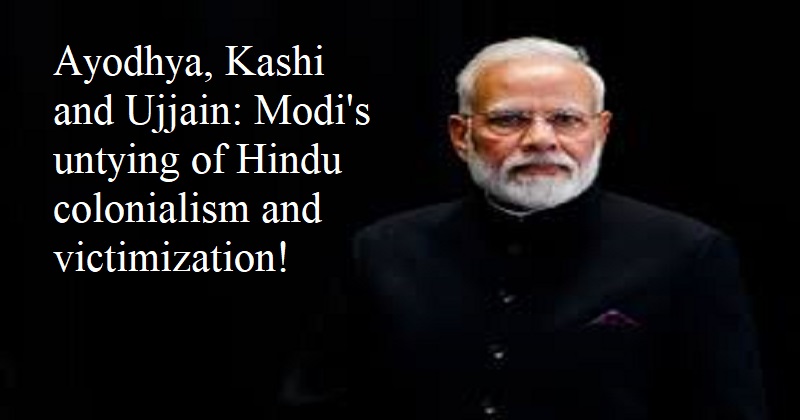
Prime Minister Narendra Modi’s Mahakal moment in Ujjain may appear to be an act of ‘Hindu revivalism’ to those who are unfamiliar with Indian civilizational history and its existential traumas, as Jawaharlal Nehru had accused KM Munshi of doing when he pushed for the restoration of the Somnath temple to its original, pristine glory. It would also enrage a great deal of conceited liberals who fervently espouse secularism, unaware of the idea’s inherent Christian roots and foundation in the ‘specific theological framework that was conceptually conceived of during the Protestant Reformation,’ as J Sai Deepak writes in ‘India That Is Bharat’.
The Mahakal act of Prime Minister Modi will also shock people who were born and raised with the idea of secularism, which, in the words of former Prime Minister Manmohan Singh, ‘stigmatises the majority as primordially oriented’ and ‘unapologetically gives the minorities the first access to the nation’s resources’. Then, of course, there are Modi’s political and ideological rivals, who would see the progress through a constrained political and ideological lens. On the day of the Mahakal corridor’s opening, a veteran journalist who was intimately tied to the previous administration tweeted, ‘Kuchh TV channelon ne aaj dher saari afeem bechi (Today, certain TV channels sold so much opium),’ revealing the divide.
For the first time in many years, the country’s temples are being restored in a planned and systematic manner. If one disregards the singular instances of Sardar Patel, KM Munshi, and Rajendra Prasad in relation to the Somnath temple or Ahilyabai Holkar’s renovation of the Kashi Vishwanath temple in the 1780s. With a history of continuous human occupancy spanning more than 5,000 years, Varanasi is the world’s oldest city still in existence. Kashi Vishwanath Mandir’s remodelled complex and corridor were opened by PM Modi last year. It took little over two years to construct this project, which reproduced the Varanasi temple complex.
Under the Modi administration, the Kedarnath temple in Uttarakhand is also undergoing extensive rehabilitation and building work. While revealing an Adi Shankara statue in November of last year, Modi also unveiled a number of shrine-related renovation projects. It is an indication of a new India that is at ease with its civilisational history if one eliminates the politico-ideological blinkers that frequently prevent one from seeing the big picture.
Modi is fighting on two fronts: the physical and the psychological. The physical evidence of a civilisation’s durability and quality is deliberately chosen as a target and destroyed when it is assaulted and nearly destroyed. Some are able to live because they function in filthy, subhuman conditions. Several others are compelled to coexist with the invasive religion.
India’s history textbooks continue to be written from the viewpoint of invaders rather than conquerors, which is how history really ought to be written. The physical side of the conflict has been handled well by the prime minister, who has helped some of the most revered Hindu temples emerge from the shadows. These temples have been a blatant indicator that the hurt civilization is awakening to its illustrious heritage.
India is still portrayed as an uninhabited continent that awaits colonisers, such as Dravidians, Aryans, Muslims, and Europeans. And not a shred of proof is used to support anything that is being taught. Because textual evidence from the epics and Puranas points to an emigration from India. Additionally, genetic and archaeological findings demonstrate that the inhabitants of the subcontinent have not altered much for at least a few thousand years.
The Nehruvian era patronised historians who pursued historical negationisms and distortions in an effort to flip reality on its head. Oh, Mahmud of Ghazni assaulted temples because of their money, as Romila Thapar claims, despite the mountain of evidence demonstrating how he resisted giving up the Somnath temple after being promised all the treasure deposited there. And if Audrey Truschke is to be believed, ‘poor’ Aurangzeb destroyed the Kashi Vishwanath temple to protect his people from ‘fleecing’ Brahmins. After all, keeping their citizens from being duped was one of their ‘royal duties’.
With his initiatives in Ayodhya, Kashi, Kedarnath, and now Ujjain, Modi is making sure that India doesn’t lose sight of its historical foundations while it pursues its 21st-century dreams and goals. India’s new civilisational journey is marked by the prime minister’s renovation and reconstruction of historic temples and shrines. India desires to be new yet is motivated to preserve the old.

Post Your Comments